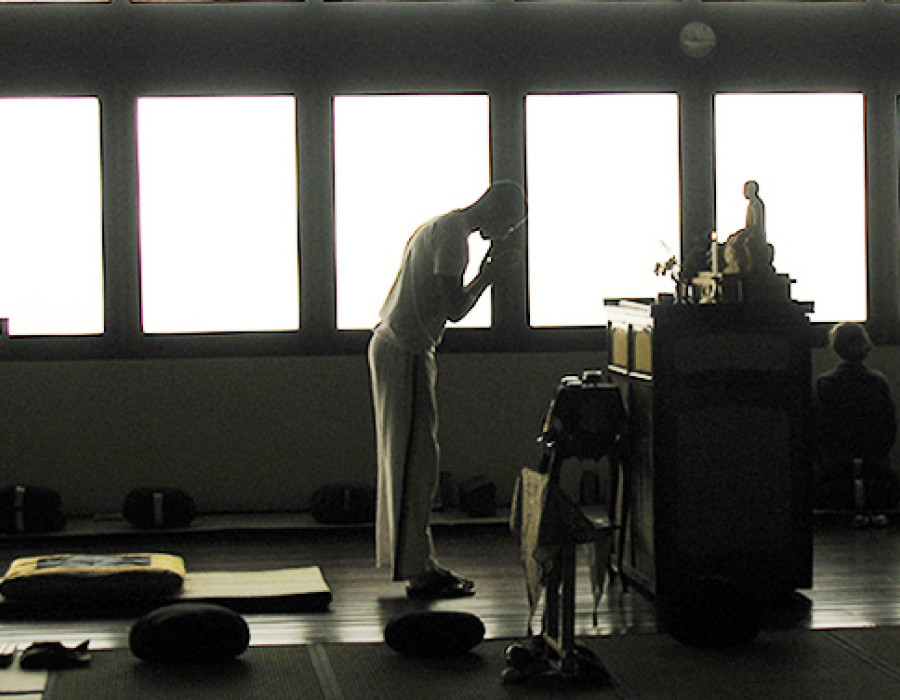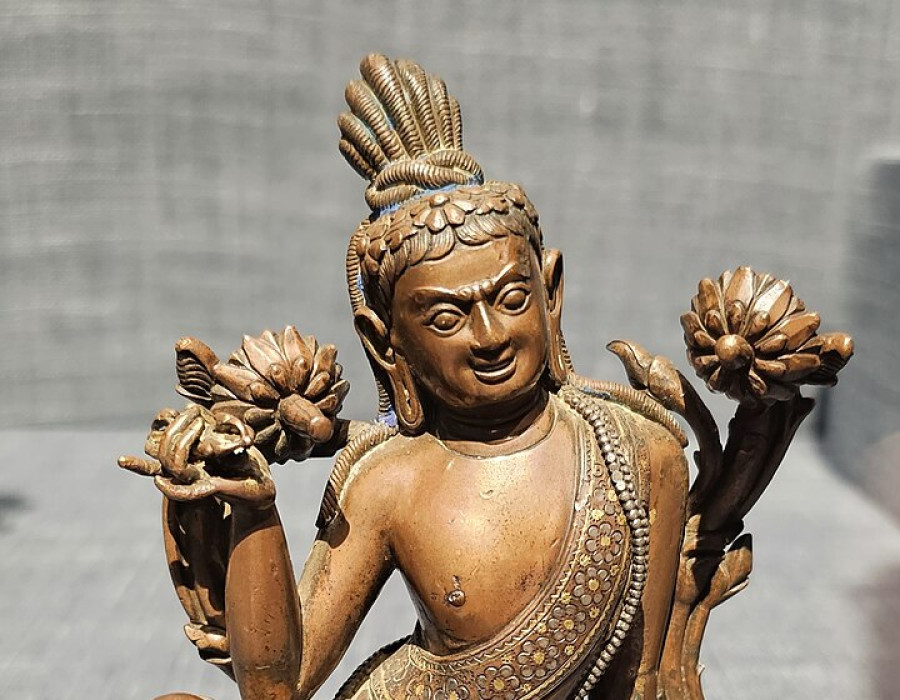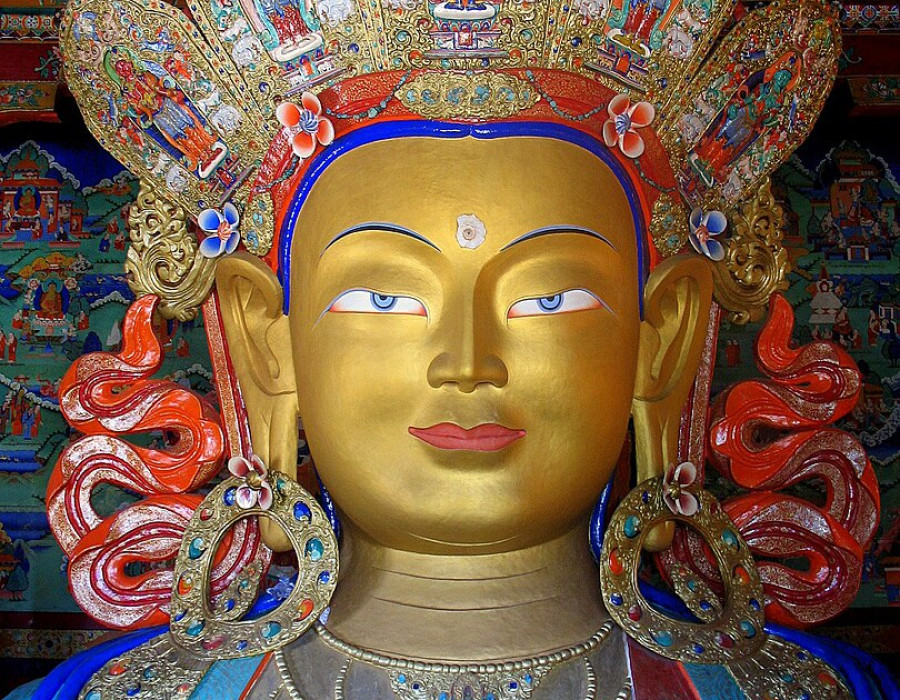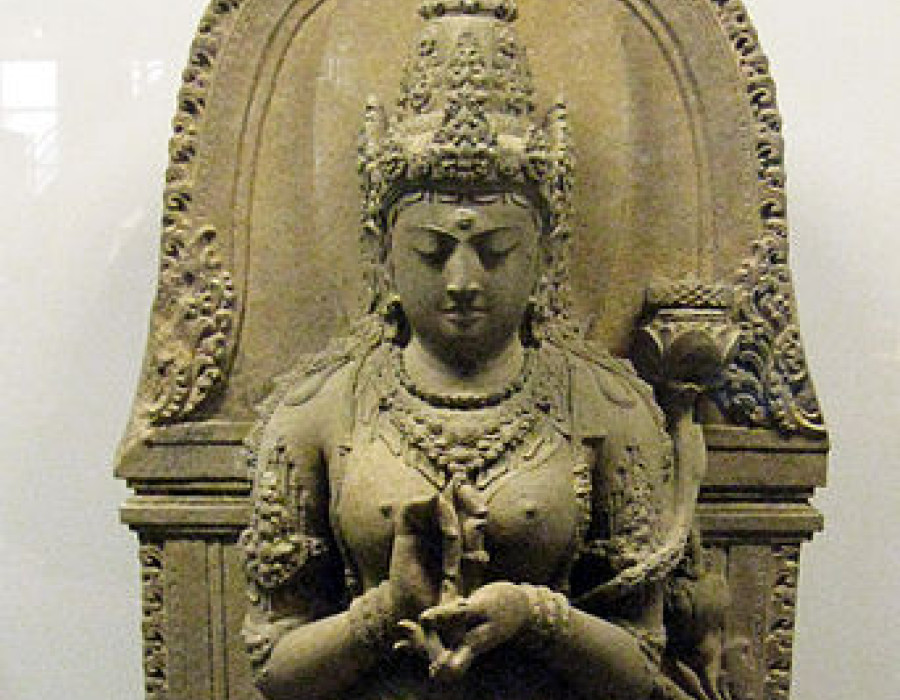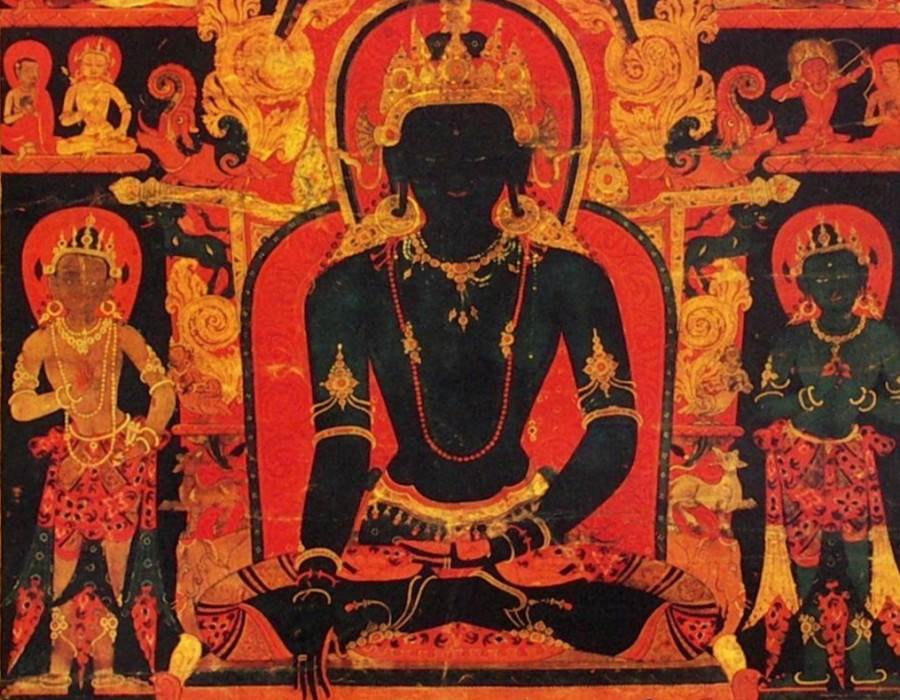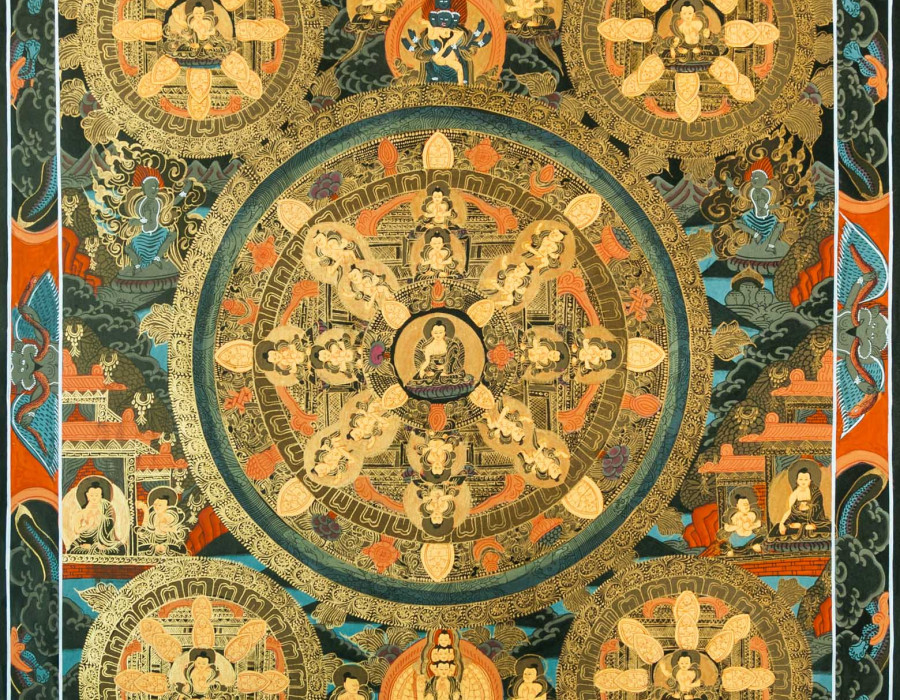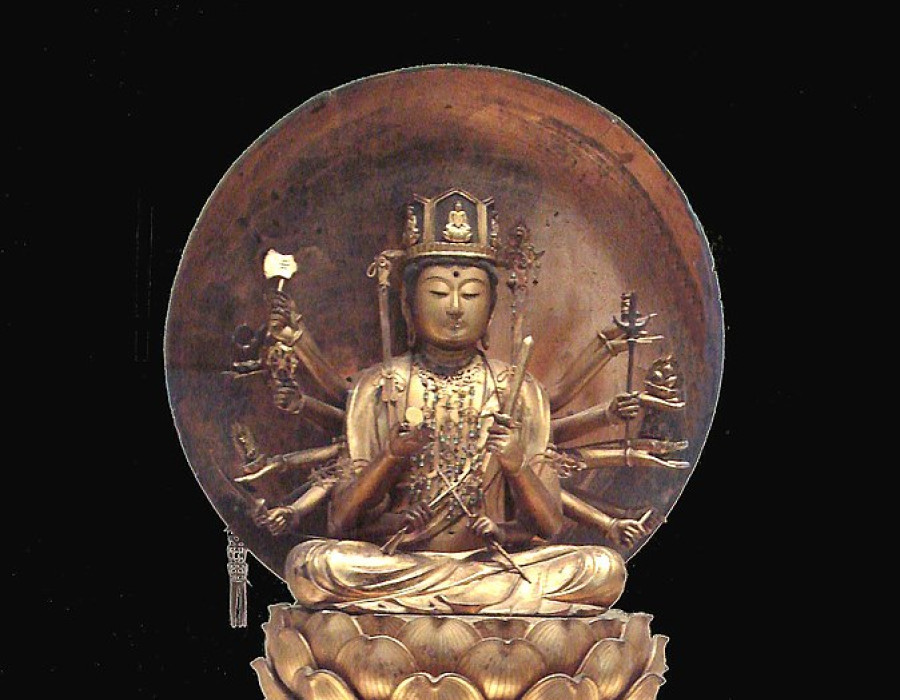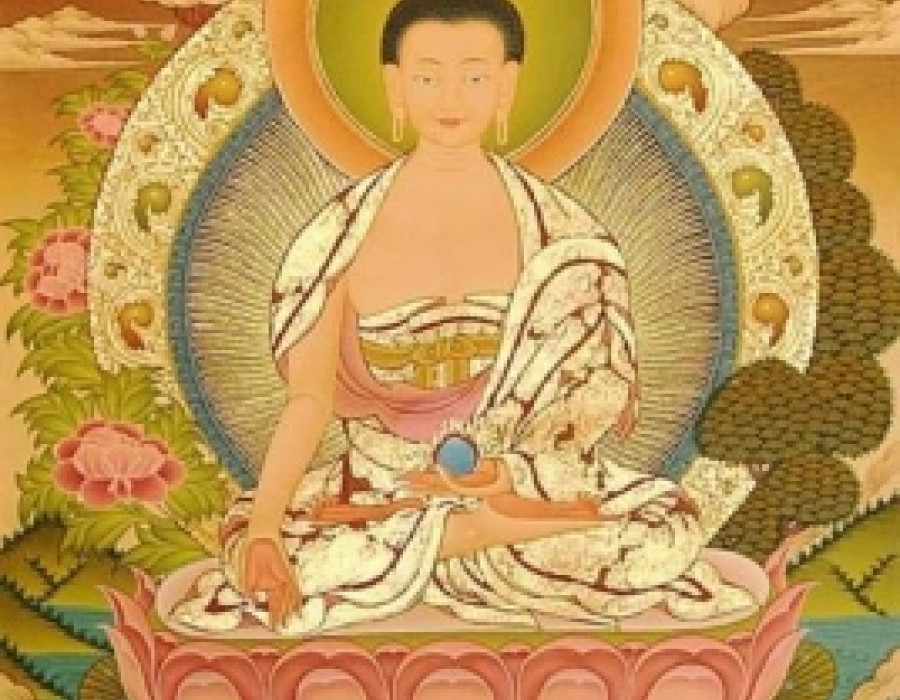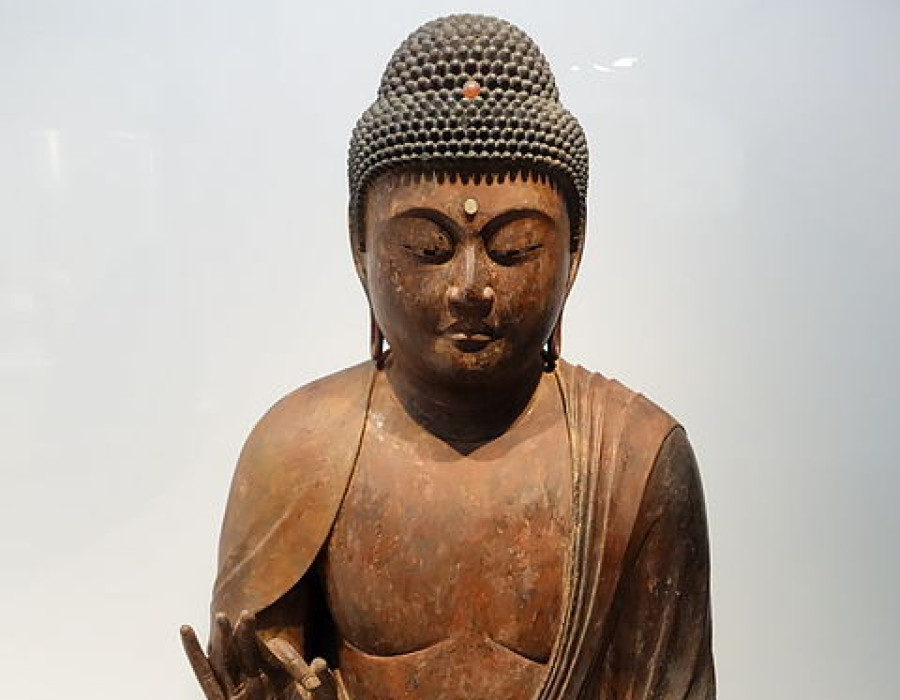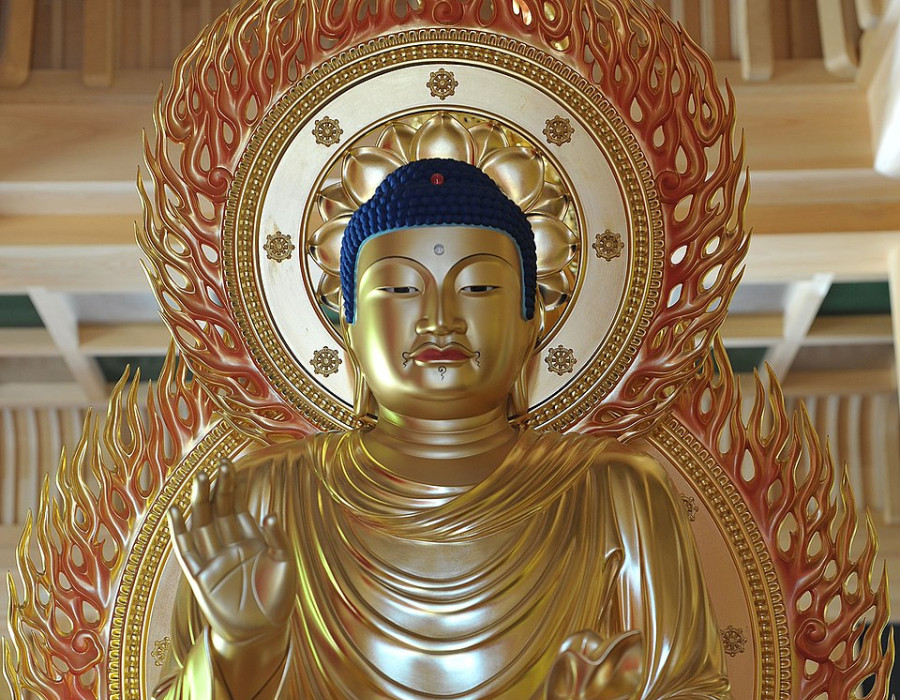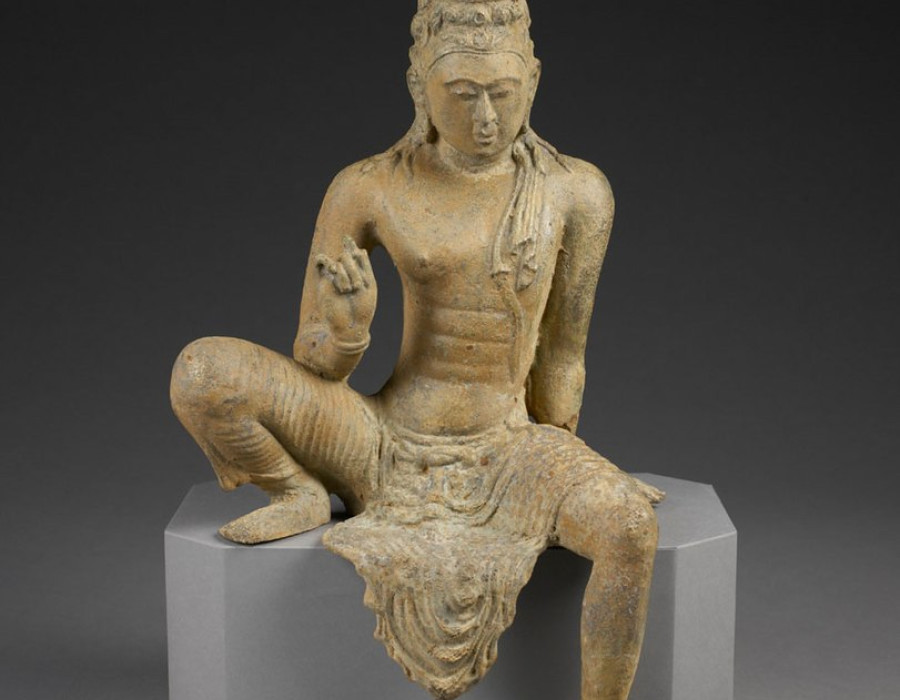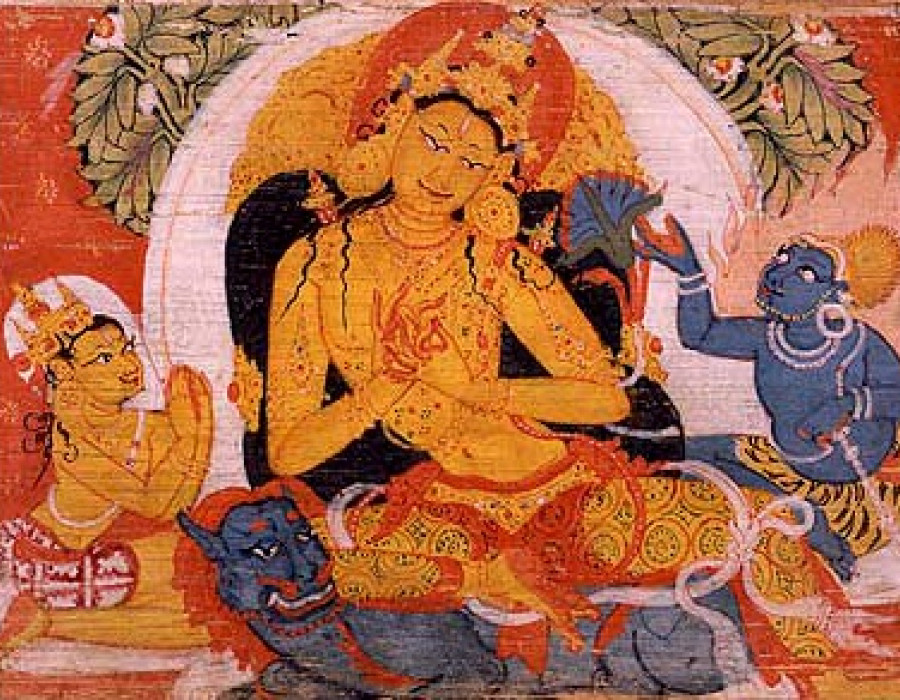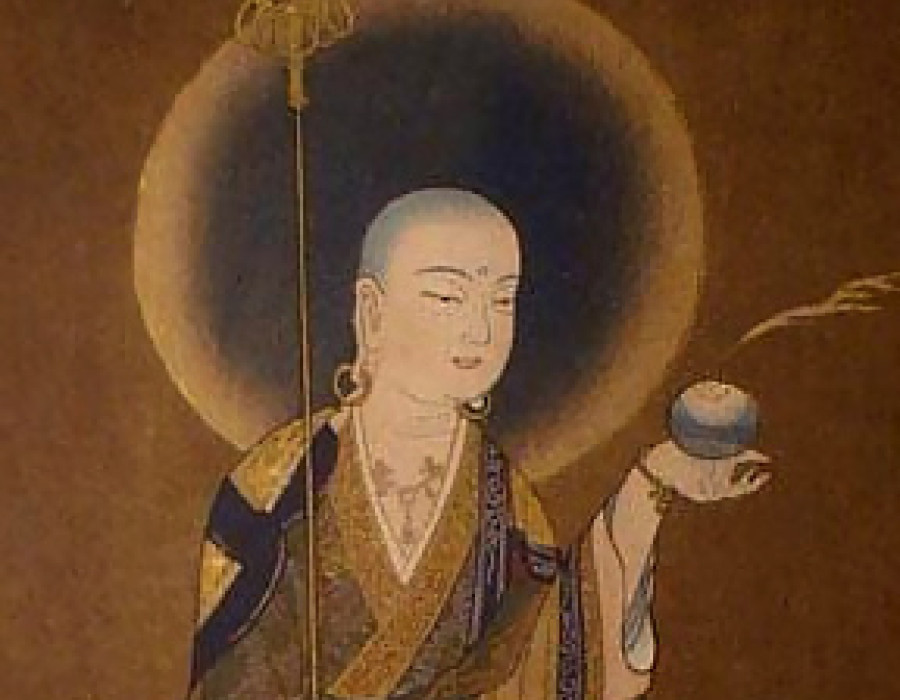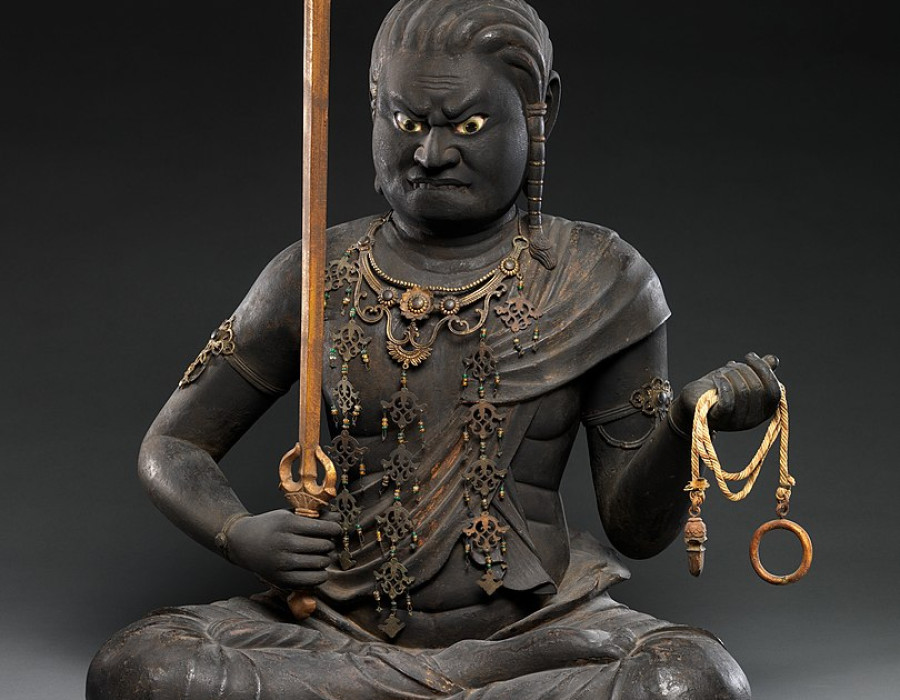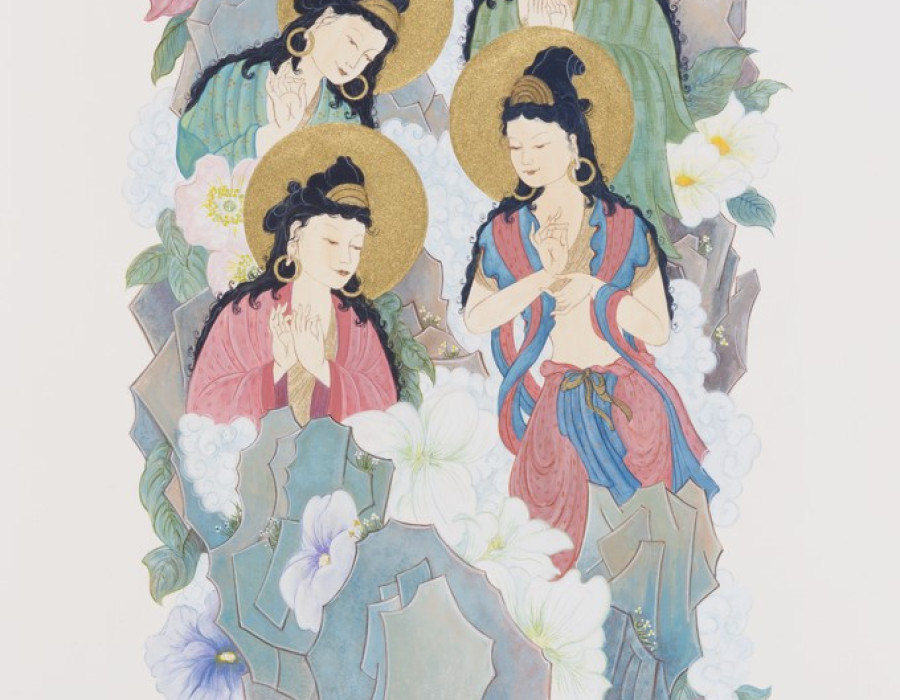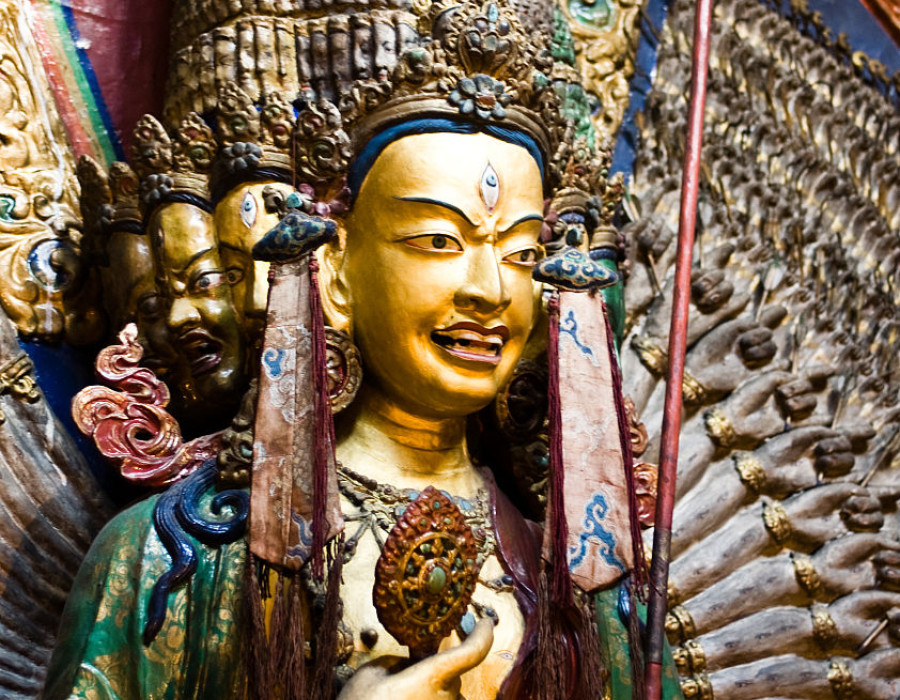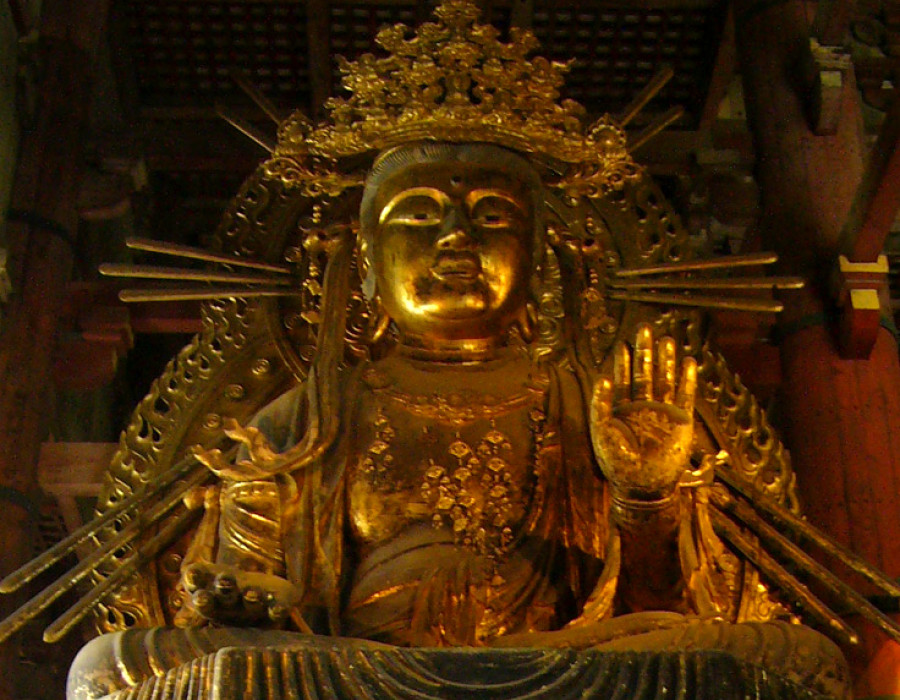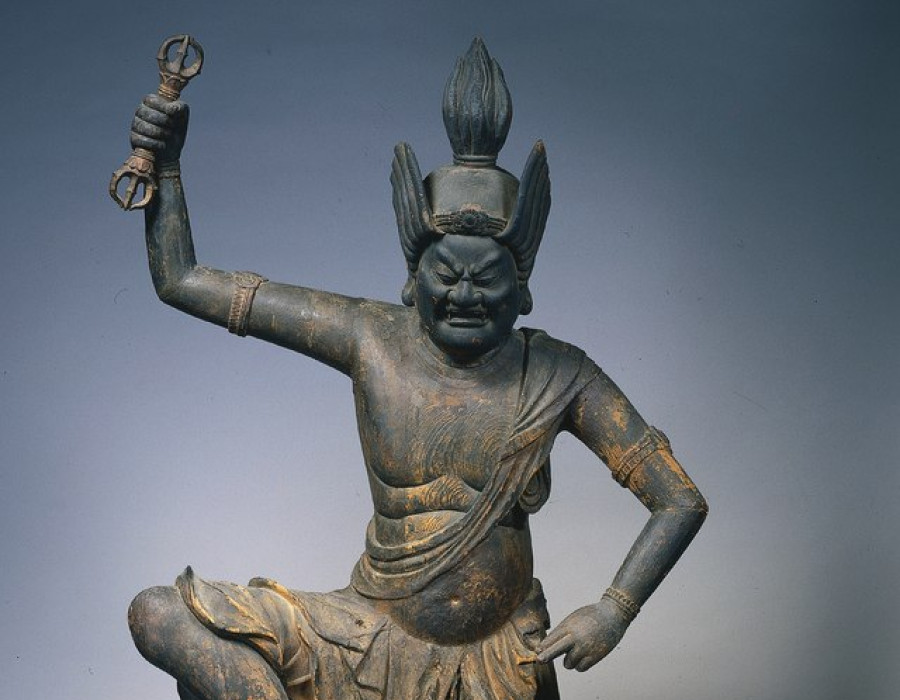
Martin Goodson
Samantabhadra
Bodhisattva Samantabhadra is known as Fugen in Japan and is the Bodhisattva of Praxis. He is known as the Bodhisattva of Compassion in Activity.
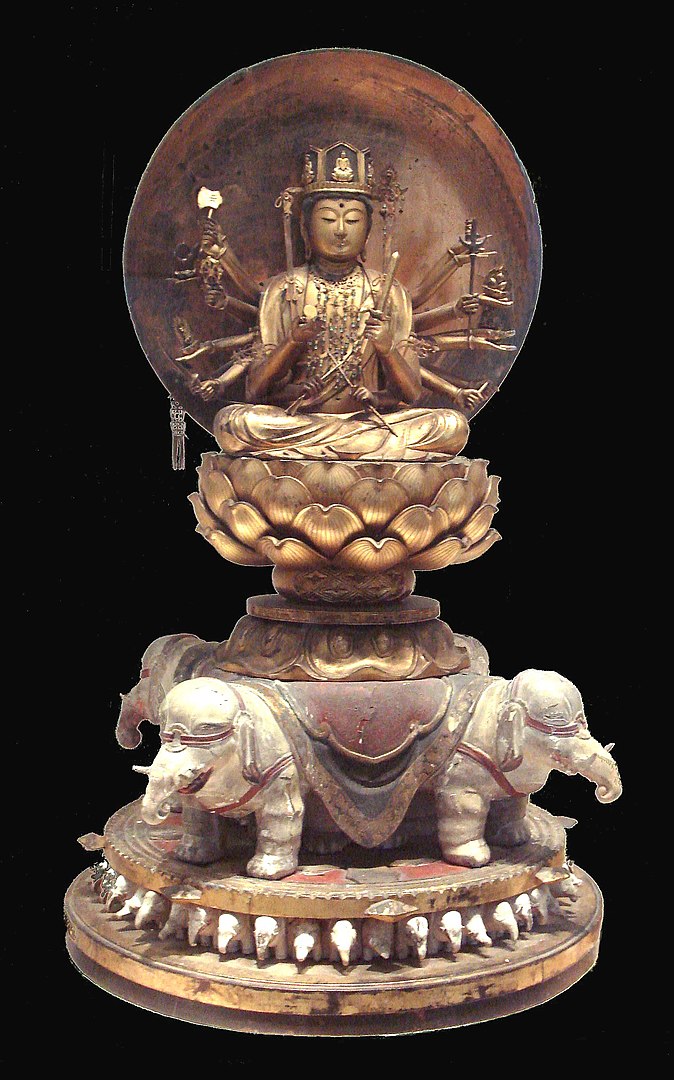
Fugen Enmei (普賢延命菩薩), the life Preserver.
Fugen Enmei (普賢延命菩薩), the life Preserver. commons.wikipedia
This Bodhisattva Mahasattva, whose name means ‘Universal Worthy’, is distinct from the Buddha of the same name that appears in Tibetan Tantra as one of the Transcendent Buddhas.
Bodhisattva Samantabhadra is known as Fugen in Japan and is the Bodhisattva of Praxis (śilā). He is sometimes known as the embodiment of compassion-in-activity, and stands on the right side of the Buddha, whilst Manjushri stands on the Buddha’s left, forming a trinity.
Iconographically, he is often depicted sitting on an elephant sometimes equipped with six tusks representing the six sense bases. Some sources claim that this is the elephant that entered Queen Maya in the dream she had which foretold the coming of Buddha Sakyamuni. As such, the elephant can be seen to represent the sum total of all the merit accumulated from the spiritual practices of the Buddha’s previous births (jataka).
Samantabhadra appears in The Lotus Sutra, where he vows to protect those who preach this Dharma.
Again, Lord, the monks, nuns, male or female lay devotees, who at the end of time, at the end of the period, in the second half of the millennium, shall study this Dharmaparyâya, when walking for three weeks, (or) twenty-one days, to them will I show my body, at the sight of which all beings rejoice. Mounted on that same white elephant with six tusks, and surrounded by a troop of Bodhisattvas, I shall on the twenty-first day betake myself to the place where the preachers are walking; there I shall rouse, excite, and stimulate them, and give them spells whereby those preachers shall become inviolable… I will protect them, take care of their safety, avert blows, and destroy poison. I will, besides, O Lord, give those preachers words of talismanic spells, such as, Adande dandapati, dandâvartani dandakusale dandasudhâri dhâri sudhârapati, buddhapasyani dhârani, âvartani samvartani sanghaparîkshite sanghanirghâtani dharmaparîkshite sarvasattvarutakausalyânugate simhavikrîdite. The Bodhisattva Mahâsattvas, whose organ of hearing is struck by these talismanic words, Lord, shall be aware that the Bodhisattva Mahâsattva Samantabhadra is their ruling power.
(The Lotus Sutra Ch. 26 [1] )
Samanatabhadra also expounds the ten vows which he undertook in order to attain Buddhahood in the Avatamsaka Sutra - the basis for the Chinese Hua yen School. Although Hua yen died out, its philosophical understanding became the basis for Chan/Zen praxis. This sutra’s main theme is the interpenetration of the ‘one’ in the ‘all’, the ‘all’ in the ‘all’, as well as the realisation of emptiness, which is not seen in any way as contradicting the mundane way of seeing ‘forms’.
The Ten Vows of Samantabhadra are:
To pay homage and respect to all Buddhas.
To praise the Thus Come One-Tathagata.
To make abundant offerings. (e.g. give generously)
To repent misdeeds and evil karmas.
To rejoice in others' merits and virtues.
To request the Buddhas to continue teaching.
To request the Buddhas to remain in the world.
To follow the teachings of the Buddhas at all times.
To accommodate and benefit all living beings.
To transfer all merits and virtues to benefit all beings.
The Bodhisattva Mahasattva expounds upon these vows and his conduct (praxis), in the final chapter of the Avatamsaka, which is seen as a summation of the whole of this long Mahayana sutra. As such, this scripture can act as a stand-alone sutra in its own right.
As befits the Bodhisattva of Praxis these 10 devotional activities are actions of body, speech and mind. Thus this figure is often seen with the palms of his hands pressed together in the activity of supplication and prayer.
In Japanese Buddhism, the 14th day of the month is seen as sacred to Samantabhadra (Fugen) and prayers and devotions to him are regarded as particularly meritorious on this day. He is also Patron of those born in the years of the Dragon and the Snake.
Women of the Japanese Court during the Heian period adopted the Lotus Sutra as the basis for their practice. As Samantabhadra (Fugen) was the protector of those who practiced this Dharma they adopted the Bodhisattva as Patron of women practitioners.
In line with the theme of the interpenetration of all forms, the Bodhisattva Mahasattva declares the equality of devotion to all beings in the final chapter of the Avatamsaka:
Moreover, Good Man, to constantly accord with living beings is explained like this: Throughout seas of Kshetras* in the ten directions exhausting the Dharma Realm and the realm of empty space, there are many different kinds of living beings. That is to say, those born from eggs, womb-born, moisture-born, transformationally born, as well as those who live and rely on earth, water, fire, and air for their existence. There are beings dwelling in space, and those who are born in and live in plants and trees. This includes all the many species and races with their diverse bodies, shapes, appearances, lifespans, families, names, and natures. This includes their many varieties of knowledge and views, their various desires and pleasures, their thoughts and deeds, and their many different deportments, clothing and diets. It includes beings who dwell in different villages, towns, cities and palaces, as well as gods, dragons, others of the eight divisions, humans and non-humans alike.
Also there are footless beings, beings with two feet, four feet, and many feet, with form and without form, with thought and without thought, and not entirely with thought and not entirely without thought. I will accord with and take care of all these many kinds of beings, providing all manner of services and offerings for them. I will treat them with the same respect I show my own parents, teachers, elders, Arhats, and even the Thus Come Ones**. I will serve them all equally without difference.
(The Flower Adornment Sutra tr. City of Ten Thousand Buddhas [2] )
Kshetra(s) - Buddha field - area of influence and activity of a Buddha.
** Thus Come - A title of Buddha (Tathagata)
…………………………….

